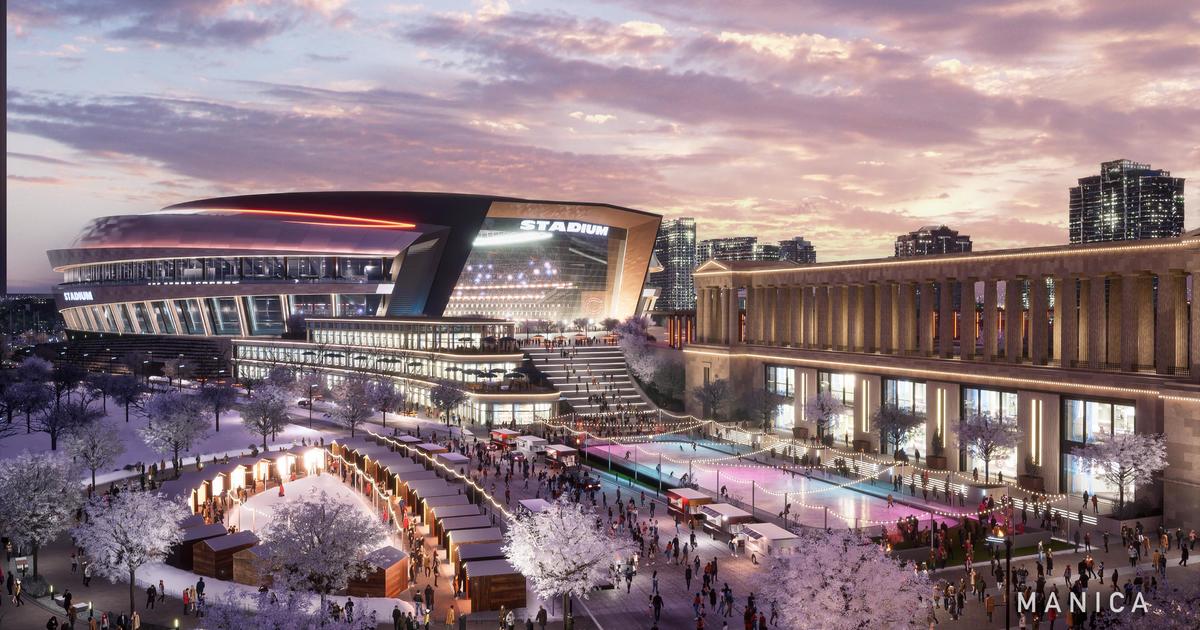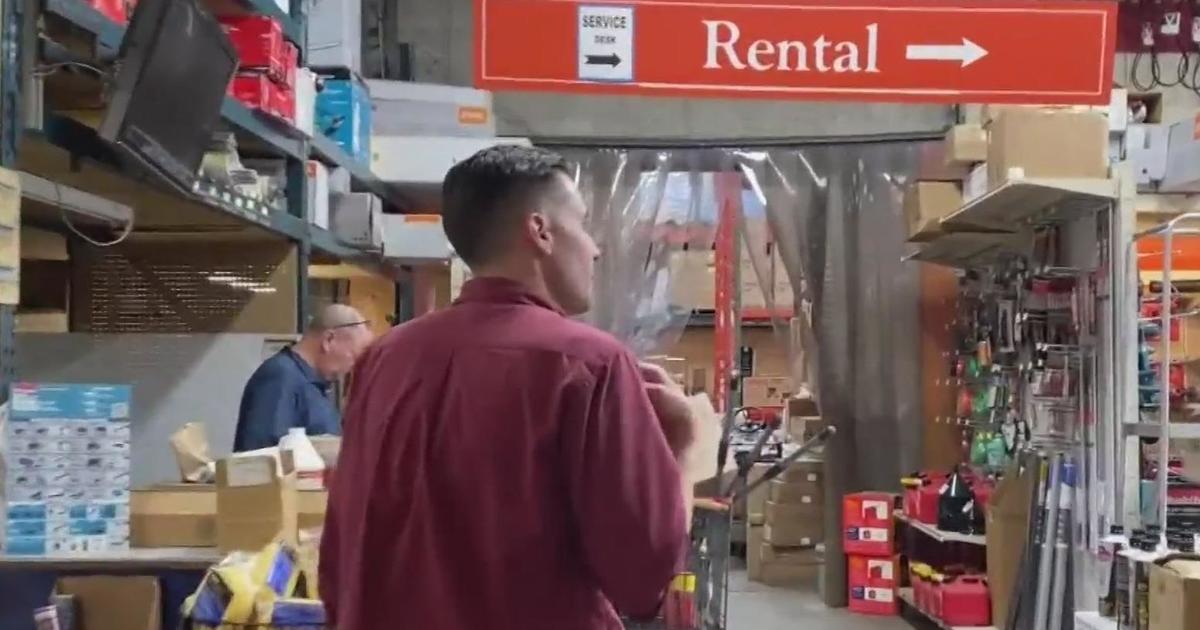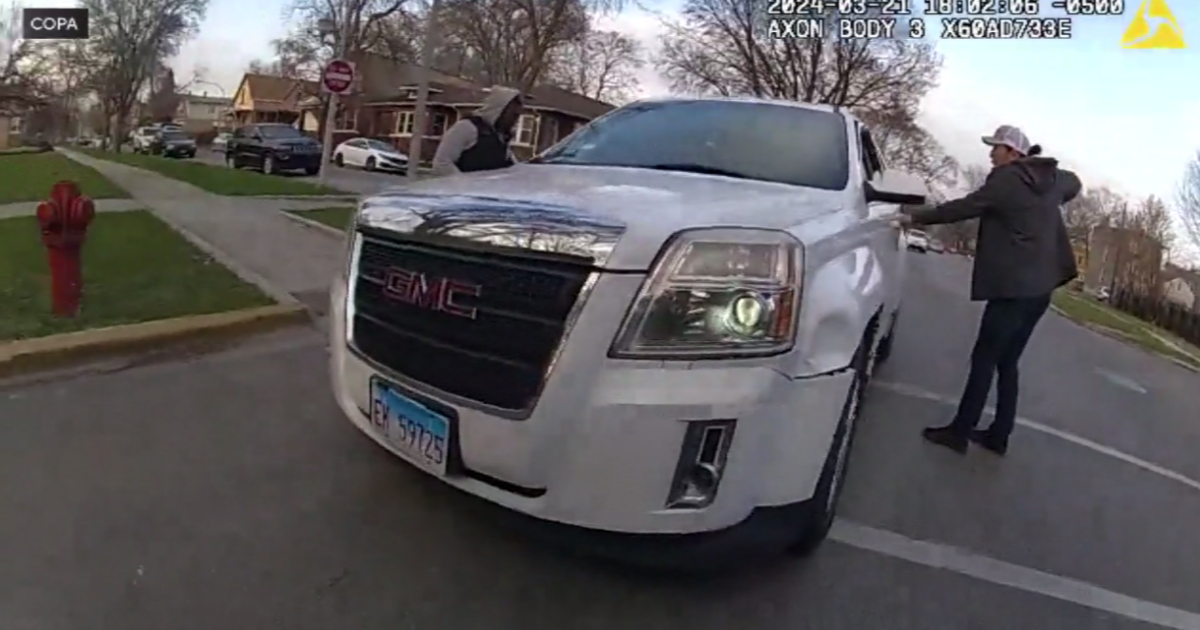Wisch: Fenway & Wrigley – A Tale Of Two Renovations
By Dave Wischnowsky –
(CBS) Last year, Fenway Park celebrated its 100th birthday. Come next year, Wrigley Field will do the same.
In Boston, Fenway capped its century mark with the completion of a 10-year, $285 million renovation of the majors' oldest ballpark. Soon, a $500 million overhaul is set to begin at the Second City's second oldest one. And last week, my wife and I visited both baseball icons during our "mini-moon" in Chicago and Boston following our wedding on Aug. 10.
In between hot dogs, drinks and pitches, I spent some time pondering what was at Fenway, what is now and what could be at Wrigley. And much like Boston is not Chicago and Chicago is not Boston – despite both being fantastic cities – it's important to first note that Fenway is not Wrigley and Wrigley is not Fenway, despite both being fantastic ballparks.
However, as the Cubs prepare their plans to make over the "Friendly Confines," the franchise would be wise to follow some of the steps that the Red Sox took to both preserve and transform "America's Most Beloved Ballpark."
But not all of them.
The following are five of my thoughts about Fenway's finished renovations in relation to Wrigley's upcoming, which hopefully will one day help turn the Cubs into what the Red Sox have already become: World Champions.
1. Yawkey Way is way cool
Prior to this past Saturday's game against the New York Yankees, I'd been to Fenway once before – but that was way back in 1994. Much has changed both in and around the ballpark since, and undoubtedly one of the best features today is the famed Yawkey Way.
Blocked off to traffic and open only to game ticket holders, Yawkey is a smorgasbord of sights, sounds and aromas designed to please the baseball fan – no matter your age. Saturday's scene included a guy on stilts wearing a Red Sox uniform, face painting for kids, a live electric guitarist and drummer, and a wide array of food and drink offerings, including some bar entrances that open onto the street.
The Cubs have repeatedly expressed interest in turning Sheffield Avenue into a similar type of full-blown street fair on game days. I've long been a proponent of that idea – it worked well as "Wildcat Way" during the Illinois-Northwestern football game in 2010 – and would like to see it come to fruition.
However, the thoroughfare should remain open to all pedestrians, not just ticket holders and the Cubs should try to find clever ways to incorporate the much maligned rooftop buildings into the streetside revelry.
2. Fenway's Jumbotrons work well
I'm still not a big fan of the giant video board that's coming to Wrigley Field, but if the Cubs manage to design – and utilize – their Jumbotron as elegantly as the Red Sox have done with theirs then it should work out OK.
Atop its outfield walls in center and right fields, Fenway actually features three Jumbotrons – one is quite small, so let's call it 2½ – and the displays do add nicely to the overall game experience. Replays are particularly nice because Fenway includes so many odd angles and obstructed sight lines that you often can't see some game action from your seat. My wife particularly enjoyed the enhanced statistical information that the screens offered such as each batter's career numbers vs. the pitcher.
Prior to the first pitch, the trio of Jumbotrons worked smoothly in tandem as they played a montage of beautiful Boston city scenes coupled with images of "bucket boys" playing percussion. With the regular presence of bucket boys near Wrigley, the latter seemed to evoke Chicago more than Boston to me, but the overall video production was appealing and set an upbeat tone for the game.
At Wrigley, the key will be to use the Jumbotron judiciously – in other words, don't overwhelm the fans with it. The video board should complement the game and the ballpark, not distract from them. Fenway does this well, and let's hope the Cubs do the same.
3. Subtract the ads
A Facebook friend on Saturday called an image of Boston's iconic left field wall the "Green, Red, Blue & White Monster" due to the advertising that's crept up, over and around it. Before the game against the Yankees began, I counted 30 different ads on Fenway Park's outfield walls. But then a garage door in center field was shut, and the number jumped up to 31.
All that sales-y splash is done tastefully at Fenway, but you can still drown in the sea of marketing when you gaze at the outfield vista. More advertising is coming to Wrigley Field – this we know – but the Cubs really need to protect what's the best panorama in baseball by not throwing up nearly as many ads as Fenway, lest we all throw up.
4. Go for the old
At age 101, Fenway Park is old. And the great thing is, it still feels like it, even with the massive renovations. The Red Sox have done a nice job of not turning Fenway into a Disneyland version of a faux-ballpark, but rather allowing it to still stand as a monument from the past.
One notable example is how the green metal frames around the concession stand windows still carry a considerable amount of rust. In that same vein, the Fenway jumbotrons also display the names of batters by showing digitized white letters on digitized green metal signs – that also feature digitized "rust."
Both measures – real and digital – are small touches, but it's those type of little things that really add up into something big. Hopefully, the Cubs pay the same attention to detail. Because, while it will be great to see Wrigley updated, no one wants to see the old ballpark become "like new."
5. Expand the history lessons
At times, the Cubs and others have complained about how Wrigley Field being treated like a "museum" hamstrings the team's business operations. But here's the thing: Wrigley Field is a museum.
And it absolutely should be treated as such.
The Red Sox get this, and along with maintaining a sense of authenticity within Fenway's confines, the Sox also have done an excellent job of playing up the history of the ballpark and the greater franchise.
Dotting the walls throughout Fenway is a wide array of finely crafted historical displays. These include a series of wall hangings showing the evolution of the Red Sox logo through the decades (a popular photo spot for fans), one exhibit honoring "The Greatest Generation" of Boston players who fought during World War II, and another that highlights the history of the team's trainers and features a cool X-ray of Ted Williams' broken elbow.
The Cubs may not have many championships, but they still have as much history, tradition and lore as any team in baseball. Respect that, respect the ballpark and trumpet both in tasteful ways much like Fenway has – minus the over-the-top glut of ads – and Wrigley's renovation should be a hit.
Now, if the team itself can just get some.
If nothing else, Dave Wischnowsky is an Illinois boy. Raised in Bourbonnais, educated at the University of Illinois and bred on sports in the Land of Lincoln, he now resides on Chicago's North Side, just blocks from Wrigley Field. Formerly a reporter and blogger for the Chicago Tribune, Dave currently writes a syndicated column, The Wisch List, which you can check out via his blog at http://www.wischlist.com. Follow him on Twitter @wischlist and read more of his CBS Chicago blog entries here.




